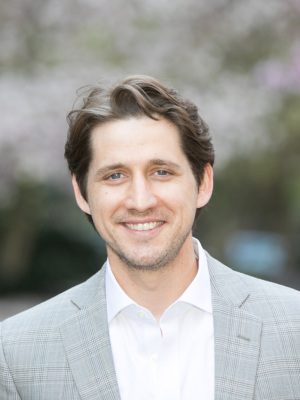Partnering to Shrink the Time Between Disaster and Recovery

Reese May, Chief Strategy and Innovation Officer, SBP

Bethsabee Medina, Director, State Government Affairs, Viatris
By Bethsabee Medina, Director, State Government Affairs, Viatris and Reese May, Chief Strategy and Innovation Officer, SBP
Download the 2024 Summer Edition of NHCSL's Newsletter here.
Viatris is a global healthcare company with a mission to expand patient access to high-quality medicines and ensure that people worldwide can live healthier at every stage of life. Giving back to the communities we serve is fundamental to that mission and we actively seek out partners who share our commitment to strengthening those communities. Our partnership with SBP began in 2016 with a grant to assist flood-impacted families in West Virginia and has grown over the years in response to other natural disasters. We welcome this opportunity to connect the NHCSL community with SBP to share important information about their mission and programming.
The Story of SBP
SBP is a social impact, disaster preparedness and recovery nonprofit that seeks to support historically underrepresented communities before and after disasters. While we can’t prevent natural disasters, we can prevent the suffering they cause. SBP shrinks the time between disaster and recovery through five interventions: BUILD efficiently; SHARE our model with other organizations; PREPARE home and business owners through resilience training; ADVISE municipal and state officials; and ADVOCATE for policy changes and improvements to the disaster recovery industry. We have served communities impacted by disasters across the country, including in Puerto Rico, Louisiana, Texas, and Florida. We have many programs and want to introduce the NHCSL community to two of them.
SBP’s Disaster Assistance Program
Historically, FEMA’s method of post-disaster housing inspection frequently results in FEMA-verified loss amounts that undervalue the damage done to a home and limits the amount of FEMA housing assistance a survivor can receive. Nationally, 96% of disaster survivors accept the first award FEMA offers, with fewer than 4% appealing FEMA decisions. Millions of disaster survivors receive less FEMA assistance than they are qualified for, and these funds may be the only recovery options for vulnerable families
SBP’s Disaster Assistance Program (DAP) fills a much-needed gap by helping survivors navigate the FEMA appeals process, promoting equitable distribution of recovery resources, and building financial resilience for the most vulnerable survivors. On average, survivors in SBP’s DAP program see a 104% increase in assistance over their original FEMA award. SBP also trains nonprofit partners on how to successfully draft appeals, so more professionals can assist their community following a disaster. SBP assists clients in the appeals process but all funding is transferred directly from FEMA to the disaster survivor themself. Since program inception, DAP has assisted more than 850 households, with a cumulative $4M in additional FEMA awards.
SBP’s Recovery Acceleration Fund
After a disaster, federal assistance for permanent repairs to low-and moderate-income homes is provided by the Department of Housing and Urban Development (HUD). On average, it takes 24-30 months before these funds appear in devastated communities, forcing millions of Americans to wait years before returning to their homes. Delays in disaster assistance disproportionately affect low- to moderate-income families, strain adjacent social services, and erode community ties in the early days of recovery.
SBP’s Recovery Acceleration Fund (RAF) is a social impact investment fund that aims to rebuild homes sooner for the most vulnerable homeowners. RAF is a collection of short-term loans to fund immediate construction repairs for qualified survivors.
Benefits of RAF:
- Preserves affordable housing by safely and quickly returning families to the homes survivors already own.
- Allows the most vulnerable survivors to return home sooner (months vs 2+ years).
- Drastically reduces typical administration and project delivery costs of a state and/or local housing recovery program.
RAF changes the lives of disaster survivors who access it, and at scale, it has the potential to transform our nation’s approach to disaster recovery by incentivizing a marketplace to prioritize the recovery of the most vulnerable communities. The fund has successfully rebuilt and been reimbursed for more than 40 homes in Florida and Louisiana.
For more information about SBP, please contact Reese May, at Reese@sbpusa.org To learn more about Viatris, please visit: https://www.viatris.com/en.
